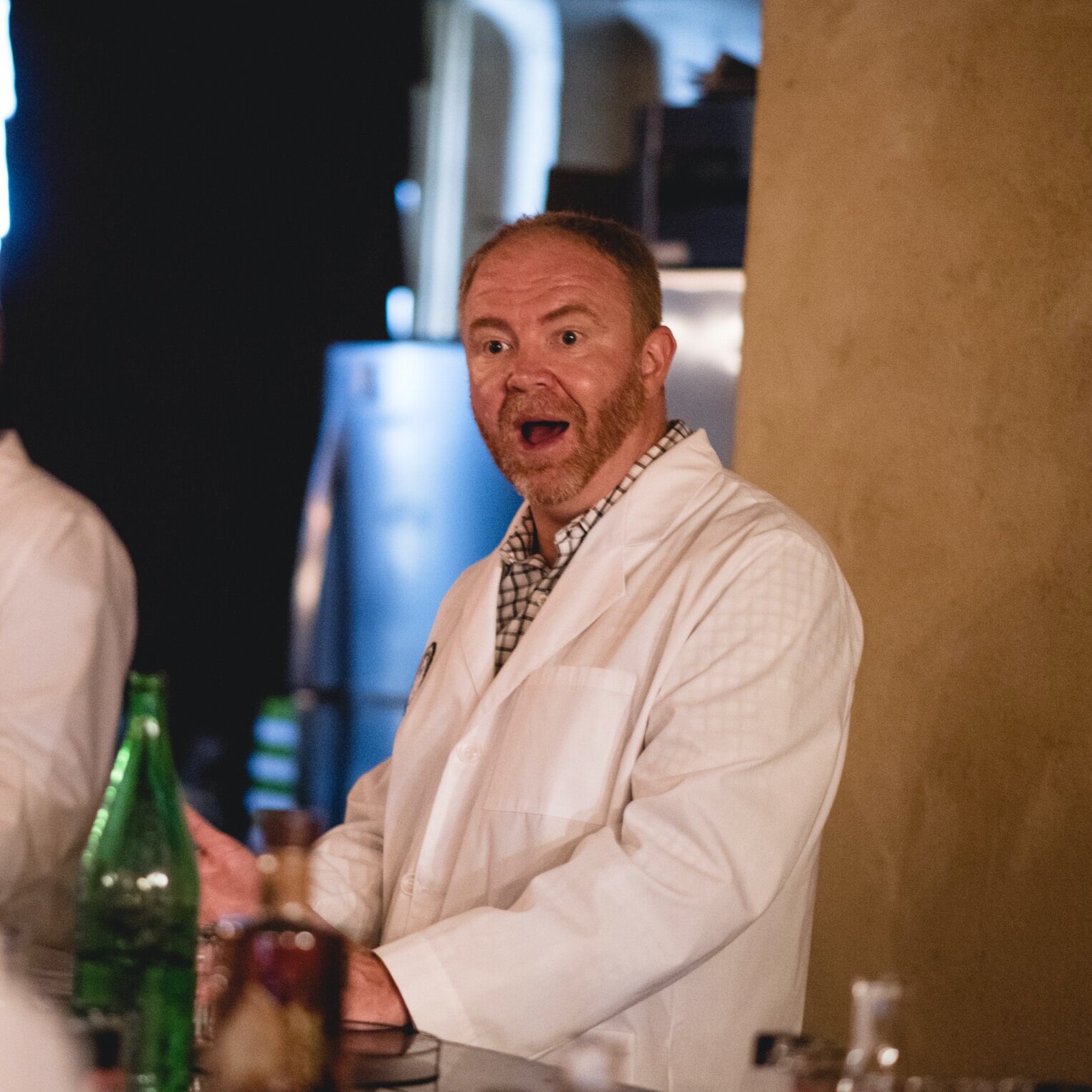The Manhattan Project
There is one experience that involved over 2,000 man hours and never saw the light of the day, partly because it was meant to be conducted in secrecy, but mainly because it was weeks from wrapping up when I left Wingtip. It was called The Manhattan Project because (1) it was all about the Manhattan cocktail, (2) like its namesake, it was a large operation conducted in secrecy, and (3) it required scientific precision in order to achieve the desired results.
The Manhattan cocktail is very personal for me. The first woman I enjoyed one with was my grandma who would have been in her late 80s at the time. It wasn’t until I met the woman I eventually married that I met another woman that actually liked Manhattans. It was so central to our relationship that Wingtip’s Bar Director mixed a Manhattan during our wedding ceremony for a special blessing. By luck or by plan, it also happened to be the top selling cocktail at Wingtip by a large margin which enabled the club’s investment in The Manhattan Project.
The premise: a Manhattan is made of two parts rye or bourbon (purists would say rye), one part sweet vermouth (purists would say Italian sweet vermouth), and a couple dashes of bitters. There are hundreds of bourbons and ryes, but just a handful of Italian sweet vermouths you’d find, even at the best stocked bottle shop. Martini & Rossi is the market leader, although Carpano Antica is what you’ll find at most craft cocktail bars; Punt e Mes and Alessio are lesser known but easily obtained. And while there are hundreds of bitters, Angostura is found in every bar, as well as the original recipe, so it made sense to go with it. The question was: for a given bourbon or rye, holding all of the other variables constant, which Italian sweet vermouth would make for the best Manhattan?
To answer the question, we needed to make sure the Manhattans were made exactly the same, to the milliliter. And we needed Manhattan-loving judges willing to put on lab coats and blind taste hundreds of Manhattan samples — over 400 to be exact (2 whiskies x 4 sweet vermouths per week for 50 weeks).
Every Monday night for a year, about 12-15 members out of a total group of 25 of the club’s biggest Manhattan fans, would assemble privately for the evening’s tastings. Two whiskies were tasted in succession each night. Most nights, the members would have no idea what whiskey was being tasted, or whether it was a bourbon or a rye. The whiskey would be measured to the milliliter in large, class A volumetric flasks. Same for each of the four vermouths. The Angostura bitters were measured in a smaller graduated flask. The ingredients would be poured into a large beaker, and exactly 7 ice cubes would be added. To ensure each Manhattan was stirred the exact same amount, the beaker was set on a magnetic stirrer, set to the same RPM every week, and stirred for exactly 60 seconds. The stirred cocktail was then rushed to each attendee and poured into a test tube-looking shot glass for a taste, notes were taken, and scores recorded. I would say “rinse and repeat” except there would be no rinsing — that could risk residue from a prior Manhattan influencing the taste of the next Manhattan. No, for The Manhattan Project, every single liquid got its own dedicated glassware to ensure purity. That meant, at the end of a typical night, washing 120 test tube shot glasses (4 per whiskey x 2 whiskeys per night x 15 attendees) plus a dozen and a half flasks.
There was the night Richard Rhodes, author of the Pulitzer Prize-winning book The Making of the Atomic Bomb, came and spoke to the group about the actual Manhattan Project. And the night Dr. Eric Simanek, the Robert A. Welch Chair of Chemistry at Texas Christian University (TCU), dropped in to discuss his book, Shots of Knowledge: The Science of Whiskey. It was not uncommon for national brand ambassadors of premium whiskey brands to come for their tastings, drop off schwag, and tell the story of their liquid. Even more special were the handful of nights where Master Distillers joined us, including Dave Pickerell of Whistle Pig (R.I.P.), Brent Elliott of Four Roses, Denny Potter of Heaven Hill (now at Beam Suntory), Ralph Erenzo of Hudson Whiskey, and Chris Fletcher of Jack Daniel’s (photos below in order).
The findings are incomplete and unpublished, although I’m confident saying that everyone that participated would agree that the choice of sweet vermouth makes a big difference. While every member had a clear, personal favorite discovered over time, it varied enough to make the exercise worth while. Some day, I hope to start the project anew in order to deliver the results that the American people deserve.
Design credit: https://jina.design
And then there was the Manhattan Cart. Designed to hold 12 bottles of bourbon & rye, four bottles of sweet vermouth (Carpano Antica, Punt e Mes, Alessio, and Martini & Rossi), bowls for three different cocktail cherries (Luxardo, Amarena Fabbri, and Griottines), bitters, and a CO2 frosted glass chiller. One hundred forty-four unique Manhattans (12 whiskies x 4 sweet Vermouths x 3 cherries) could be made from the cart. All paid for by the brands that would be featured. To my knowledge, the only Manhattan cart in existence.











